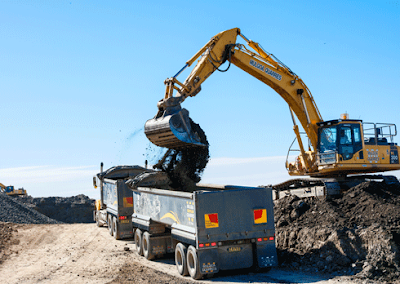Bulk Material Transport and Storage in Western Sydney
Bulk material is any substance that is loose and unpackaged, such as sand, crushed stone, blasted coal or rock mass, or powdered material. Bulk materials serve as the majority of industries' raw resources. Bulk material transport in Western Sydney, on a huge scale is done by the mining and metallurgical sectors. Bulk materials are also used in the building, textile, food, and agriculture industries.
Transferring, transporting, size reduction, screening, storage, disposal, drying, weighing, etc. are all part of the handling process for bulk materials. Depending on the properties of the material being handled, the quantity being handled, and the level of safety and quality that must be maintained, different techniques and equipment are used in such activities. Bulk material handling is essentially what mining entails.
The industrial material handling equipment is covered in this course on bulk material handling, along with many facets of its construction, safe operation, maintenance, and repair. Conveyors, feed and discharge equipment, screens, crushers, and bulk material storage systems are some of the subjects covered.
In order to improve stockpile design, blend/mix accuracy, and prevent segregation in bins, feeders, and chutes, bulk material characteristics and flow patterns are investigated.
The ability to think systematically will help students choose bulk material handling system components for particular scenarios for the best performance.
Dry bulk materials processing, transport and storage:
Dry bulk material transport in Western Sydney handling procedures include crushing, screening, conveying, storage, bagging, loadout, and transport. These procedures are generally used by producers and shippers of dry bulk solids. The mission of IAC is to equip professionals in the bulk handling business to use cutting-edge dust control technologies to assist minimize or completely eliminate worker exposure to hazardous dust concentrations.
Crushing:
At least one crushing circuit will always be present in size reduction procedures, and these circuits frequently feature many crushers often of different types. The primary criteria used in the selection of crushers are the needs for throughput and material size reduction. The composition, hardness, and abrasiveness of the feed material are secondary selection factors.
The jaw crusher, which compresses the feed material between a fixed and moving plate or jaw, is the most used form of primary crusher. Gyratory and cone crushers both work through compression and can be employed as primary or secondary crushers.
Although neither of these classes of crushers run at high speeds, the mechanical action of crushers can produce air movement. For example, jaw crushers can have a bellows-like effect, and cone or gyratory crushers can act as fans. Hammermills, in contrast, have faster moving parts and can function as centrifugal fans in accordance to bulk material transport in Western Sydney.
Milling:
Granular minerals are sized down through compression, abrasion, and impaction in the process known as milling, which is also referred to as grinding. Based on their mode of operation, mills can be divided into two general categories: tumbling mills and stirring mills. The shell of the mill spins to give the contents or charge of a tumbling mill action. These mills typically operate in a horizontal configuration. An internal stirring element in stirring mills, which can be horizontal or vertical, gives the charge motion.
To conduct the size reduction, tumbling mills use some kind of medium, frequently rods or balls made of iron or a steel alloy, or high-density ceramic material where metal contamination of the product is a concern in use of bulk material transport in Western Sydney. Semi-autogenous mills use a mixture of the feed stock and balls, while autogenous mills use the feed stock itself as the medium. Between the stationary and revolving mill components, stirring mills lower the size of the feed supply.
Conclusion:
Dust containment and dust collection are the two most crucial factors to take into account while controlling dust in a circuit for grinding, classification, and product storage. A milling or grinding circuit requires the enclosure of all the material conveying machinery involved. All transfer points must also be completely enclosed. Therefore, it is recommended to use bulk material transport in Western Sydney.



Comments
Post a Comment